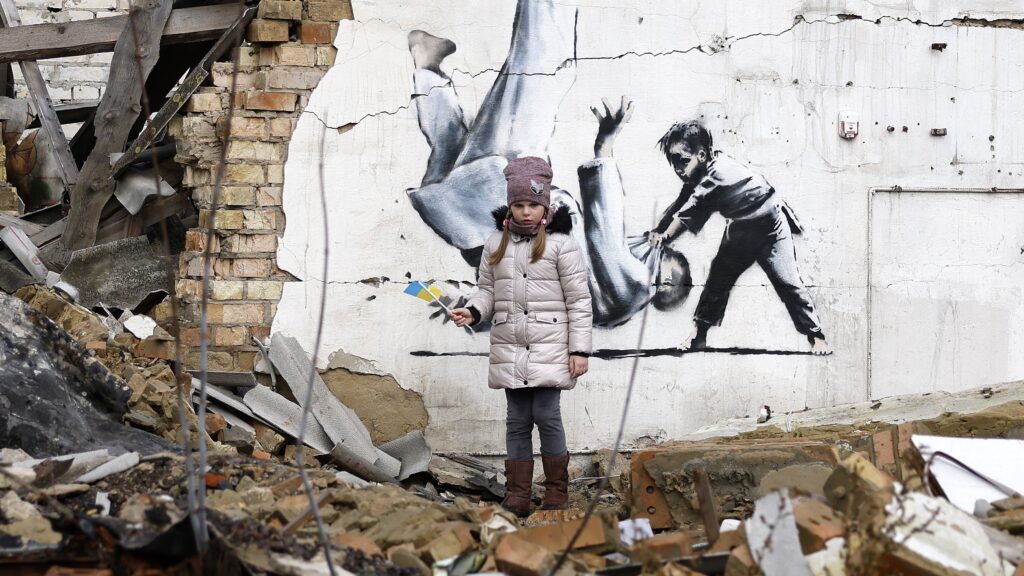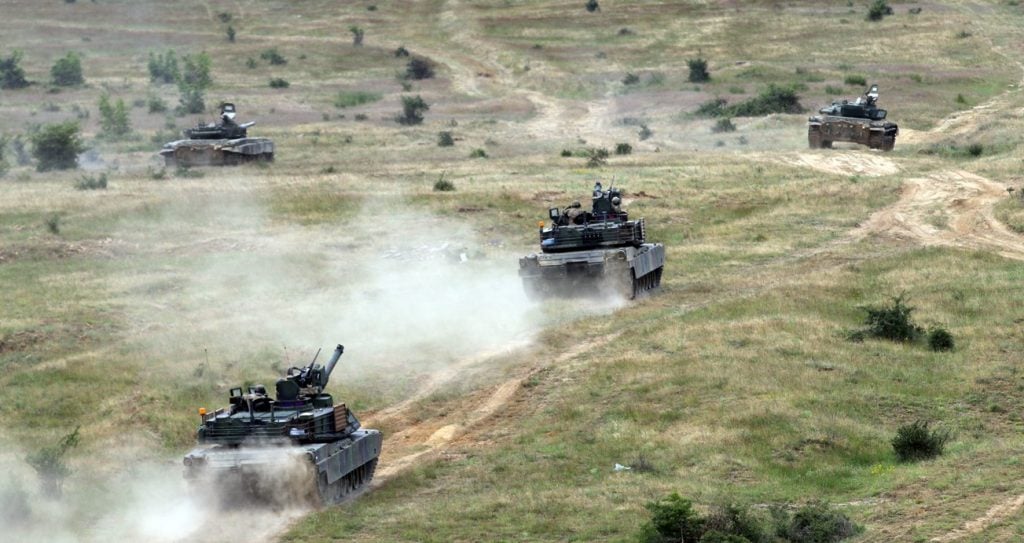SYDNEY J. FREEDBERG JR.

WASHINGTON — Despite 11 months of brutal war across Ukraine, there is no end in sight, experts at the influential RAND Corp. and other DC thinktanks warned Thursday.
With neither side able to break the other’s army on the battlefield, and both unwilling to come to the negotiating table, the emerging consensus says the likely outcome is a long war or a “frozen conflict”: a heavily armed peace broken by frequent, inconclusive violence. This marathon contest, the analysts warned, will strain both western democracies’ resolve and their defense production — and the Russian people’s historic capacity for endless suffering and loss.
Another mass mobilization of Russian men, now widely expected, will not enable Putin to drown the Ukrainians in human-wave assaults. But forthcoming Western deliveries of heavy tanks, long-range rockets, and even fighter jets may not enable Ukraine to break through Russia’s ever-denser lines of fortifications, either.
“Based on how the Russians are digging in at this point in eastern Ukraine, through a network of defensive positions and trenches, multiple lines, deep minefields, I think it’s going to be really costly for the Ukrainians to [oust] them from all areas of occupation,” said Dara Massicot, a Russia scholar, during a RAND briefing for reporters. “That being said, I just don’t see the Zelensky government ever wanting to sit down and negotiate with Russians for some type of territorial concession.”
The Kremlin position looks equally entrenched, said Massicot’s RAND colleague John Tefft, a Foreign Service veteran who was ambassador to Lithuania, Georgia, Ukraine, and Russia itself. “I’ve kind of thought from the beginning here that Putin is so dug in on this… he’s not going to budge, or is going to only budge at the very last minute if he’s under intense political pressure at home,” Tefft said. “It’s worth thinking through what a negotiation would look like, but given the military realities on the ground and Putin’s determination — and the Ukrainian’s determination — to keep fighting on, this doesn’t augur well.”
Nor is Putin likely to keep any promises he makes, Tefft added. “When I was ambassador in Georgia, in 2008, everyone will remember that first, the president of France and [then-US Secretary of State] Condi Rice came and negotiated a ceasefire agreement, and the Russians haven’t implemented anything that they agreed to.”
It’s important to note that a stalemate doesn’t mean no fighting. Far from it: remember the Western Front of World War I.
“The bumper sticker is … heat and freeze,” said Barry Pavel, head of RAND’s National Defense Research Institute. “I think we’re going see a very intense battle… in the next two to three months.” But after that furious “heat and friction,” he went on, the frontline is likely to “freeze” again.
“That means the industrial battle is really important,” Pavel emphasized. Some crucial questions: Can the West supply Ukraine with weapons and ammunition faster than the conflict burns them up? Can Russia, its oil-driven economy still largely unhurt by sanctions, resurrect rusty stockpiles of Soviet weapons and buy new technology from Iran, faster than the West can arm Ukraine?
There is also the battle of will — and sheer attrition. “The Russians are better at suffering than any people on Earth,” Pavel said, “from centuries of history.”
But sometimes even Russian soldiers reach the limits of their endurance and break, as the Red Army did in 1940 before the Nazi blitzkrieg, ceding vast territories in months — including most of modern-day Ukraine. Sometimes their autocrats then manage to rally them, as Stalin did eventually in World War II; other times the troops turn on their drivers, as the Imperial army did in 1917. With Putin throwing thousands of barely-trained conscripts at Ukrainian lines, and outburst of dissent among the newly mobilized, might the Russian army be at another such breaking point?
Unlikely, Massicot said. “I think the closest we actually came to that was when the Kharkiv [defenses] collapsed last fall,” she said. “That was uncontrolled collapse… A situation like that can cascade very quickly as panic and rumor and everything else spreads.”
“Right now, I don’t see the same ingredients, [however]. The frontlines are becoming more dense over time,” she said. “It will be hard for the Ukrainians to get that kind of breakthrough and punch through.”
“I’m not sure where that leaves it,” Massicot said frankly, “if it’s a temporary frozen conflict, or frozen frontlines for a while, but I see a military reality and I see a political reality, and they’re not really aligned at this point.”
What about the new weapons from the West — the Leopard II tanks recently released by Germany, or the GLSBD rockets with a 100-mile range, or perhaps F-16s and ATACMS missiles? Are any of those a silver bullet to change the course of conflict?
“My short answer … is ‘no,’” said David Ochmanek, a RAND senior researcher, in a follow-up email with Breaking Defense. “ As analysts, we can, with effort, identify capabilities and weapons that can be decisive in helping to win engagements and battles. But what wins wars is always more complicated, bearing on issues of strategic depth, national will, economics, etc.”

US Army M1 Abrams tanks train in Bulgaria. (US Army)
Other Experts Weight In
While the RAND panel was largely in sync, other experts were more mixed.
“Neither side has a significant enough advantage in combat power, and a few dozen tanks is certainly not going to turn the tide, nor ATACMS missiles, nor F-16 jets,” said Thomas Spoehr, a retired US Army three-star general who heads defense studies at the Heritage Foundation. “What will turn the tide is sufficient military force and munitions, tanks in quantities of hundreds, dozens more HIMARS, and similar equipment to facilitate a successful Ukrainian offensive.”
Even so, “Crimea, because of the terrain, would be very hard to take by force. The only way it can be taken is by first isolating it: cutting Kerch Bridge and the land bridge from Mariupol,” Spoehr told Breaking Defense after the RAND panel. “The most likely area where Ukraine can have success is in the south since the supply lines from Russia can be severed. The Donbas [is] more difficult because the Russians have solid supply lines.”
Pat Donahoe, a retired Maj. Gen. who led the Army’s Maneuver Center “schoolhouse” at Fort Benning, was more optimistic, saying a complex package of equipment and training could lead to successful rapid, combined-arms advances. That means the West must deliver on its promises of hundreds of heavy tanks and other armored fighting vehicles to take the open steppe, then follow up with long-range missiles, including ship-killers, for a siege of Crimea.
“As we look at the next six months and our ability to recraft the Ukrainian army into much more of a western-model, armored, mechanized force,” Donahoe told Breaking Defense, “there’s sizable pieces of terrain in the Ukraine, both north and south of the Donbas, where they could reestablish a war of maneuver.”
“When you look at their ability to retake Crimea, that’s much more challenging,” Donahoe continued. An overland attack would require a frontal attack against an easily defended isthmus less than five miles wide; an amphibious landing would require naval forces Ukraine has never had. The best solution, he said, is to cut the peninsula off by land, then use long-range precision missiles to drop the Kerch Bridge and sink Russian ships, isolating Crimea until the defenders run out of supplies.
“Long term conflict, absolutely,” Donahoe summed up. “We’re not near the end of this conflict, but I disagree with ‘frozen conflict.’”
Taking Crimea will be tough, agreed the former three-star commander of US Army forces in Europe, retired Lt. Gen. Ben Hodges — but, he said, retaking the peninsula is not optional. With Crimea and its naval bases in Russian hands, he said, Moscow can blockade all of Ukraine’s seaports at any time: “When you take that into account, the chances of Ukraine rebuilding its economy are zero.”
While an armored force can retake the southeast coast and cut Russia’s overland connection to Crimea, Hodges said, only long-range, precision-guided weapons can bring down “that stinking bridge” at Kerch and bombard Russian positions on the peninsula.
How long would it take? “Ukraine has the capability to liberate Crimea by the end of this summer — if the US decides we want them to win and we provide the capabilities now,” Hodges said. “Unfortunately I don’t see the evidence the administration actually wants them to win, [because] it’s using a process that will get stuff there by the end of this year.”
“If the administration decides that we want Ukraine to win, there’ll be no question,” he said. “Ukraine will win.”
One leading Russia expert was more cautious about any kind of prediction. “It’s premature to judge how this year will go,” said Michael Kofman, Russia expert at the thinktank CNA and host of a podcast on the conflict, The Russia Contingency. “Uncertainty about both forces combined with a lull in offensive operations up until last week renders this picture difficult to judge.
“I do agree that there’s no ‘game changer’ capability we have, and that this is the wrong way to think about war in general,” Kofman told Breaking Defense. “It’s ultimately about quantity, force employment, mobilization and reconstitution” — not specific technologies.
“I generally agree that a major breakthrough is unlikely, but wars can enter a gradually-then-suddenly pattern,” he said: Attrition can accumulate invisibly until it brings about a sudden collapse, much as slowly rising temperatures can cause Antarctic ice shelves to suddenly splinter into icebergs. “Things in war,” he warned, “are contingent.”
No comments:
Post a Comment